 July 20, 2017 John E. Ross, KD8IDJ, Editor
| |||||||
Amateur Radio Parity Act is Introduced in US Senate The Amateur Radio Parity Act of 2017 was introduced in the US Senate on July 12, marking another step forward for this landmark legislation. Senators Roger Wicker (R-MS) and Richard Blumenthal "Amateur Radio continues to be a critical part of our emergency communications operations," Wicker said. "Mississippians learned firsthand after Hurricane Katrina how Amateur Radio operators can provide a resilient, distributed network to first responders and disaster relief organizations when other communications tools fail."
"Amateur Radio operators provide an invaluable service to their communities by assisting local emergency communication efforts when disasters occur and main lines are down," Blumenthal said. "This bipartisan measure ensures that operators have access to the tools they need to support our first responders when lives are at stake." FCC Chairman Ajit Pai applauded the bill in late January, saying that it would "help Amateur Radio operators, and take several steps to promote public safety." ARRL President Rick Roderick, K5UR, expressed the League's appreciation to the Senate sponsors. "ARRL is grateful for the support of Senators Wicker and Blumenthal for sponsoring this important piece of legislation, and for advocating this bill for the past 3 years," he said. "Their continuing support is critical to the success of our efforts." President Roderick also thanked Senator John Thune (R-SD), who chairs the Senate Commerce Committee, for "championing the Parity Act in the Senate since the beginning of our effort."
The bill has enjoyed widespread, bipartisan support. In the 114th Congress, nearly 130 cosponsors signed onto the legislation in the House and the Senate. The legislation, which strikes a carefully crafted balance for all concerned parties, is the result of months of work culminating in the accord reached by ARRL and the Community Associations Institute (CAI). The measure provides for the guarantee of an effective outdoor antenna while protecting the aesthetic concerns of HOAs. In a statement, ARRL said it looks forward to working with the bipartisan leadership of the Senate and the Commerce Committee to help move the Wicker-Blumenthal legislation through the Senate and to the President's desk. Revised FCC Form 605 Will Ask Applicants "The Felony Question" A revised FCC Form 605 -- Quick-Form Application for Authorization in the Ship, Aircraft, Amateur, Restricted and Commercial Operator, and General Mobile Radio Services -- going into effect in September will ask all applicants to indicate if they have been convicted of or pled guilty to a felony. The Communications Act obliges the Commission to ask "the felony question," as it did on the old Form 610 and still does on other applications. This action will correct its omission on Form 605, which has existed for years. Applicants' responses and explanations will be used to determine eligibility to be a Commission licensee. The FCC told ARRL that it's still deciding whether to issue a public notice on the change.
The revision also will apply to NCVEC Form 605, the unofficial Amateur Radio-specific version of the application that is completed and filed at volunteer examiner coordinator (VEC) examination sessions. VECs will have to start using the revised form on September 7. Responding to VECs' questions, the FCC offered some guidance, with a particular focus on NCVEC Form 605.
ARRL VEC Manager and NCVEC Vice-Chair Maria Somma, AB1FM, thanked the FCC for honoring a request to amend the effective date of the change. "At the urging of the NCVEC leadership, the FCC took into consideration the undertaking to change and distribute all affected forms and update software and agreed to push back the execution date by 1 month," she said. The NCVEC will create a revised NCVEC Form 605 and release it to VE teams before September 7. Once the Form 605 update has been implemented, assuming all other information is correct, negative felony question responses will result in a license grant, the FCC said. A YES will place the application in the "pending file for review" category. Applicants answering YES would have to, within 14 days, provide the FCC with a statement explaining the circumstances, and a statement "giving the reasons why the applicant believes that grant of the application would be in the public interest, notwithstanding the actual or alleged misconduct," the revised Form 605 instructions state. The FCC said an applicant's answer to the felony question and explanation will be public via ULS, unless a separate request is made to the FCC that the applicant's explanation be kept confidential. The FCC will review applications on which the felony question has been answered in the affirmative, and decide whether to grant them or designate them for hearing.
The FCC said the only additional information that VECs will have to collect is the response to the felony question; any explanatory exhibits and confidentiality petitions will go directly to the FCC, and VECs will have no information as to the status of such applications.
The Doctor Will See You Now! "Power Supplies" is the topic of the latest (July 20) episode of the "ARRL The Doctor is In" podcast. Listen...and learn!
Every 2 weeks, your host, QST Editor-in-Chief Steve Ford, WB8IMY, and the Doctor himself, Joel Hallas, W1ZR, will discuss a broad range of technical topics. You can also e-mail your questions to doctor@arrl.org, and the Doctor may answer them in a future podcast. Enjoy "ARRL The Doctor is In" on Apple iTunes, or by using your iPhone or iPad podcast app (just search for "ARRL The Doctor is In"). You can also listen online at Blubrry, or at Stitcher (free registration required, or browse the site as a guest) and through the free Stitcher app for iOS, Kindle, or Android devices. If you've never listened to a podcast before, download our beginner's guide. New HAARP Research Campaign to Begin in September Last February, many HF listeners across North America and elsewhere were able to copy signals from Alaska's High Frequency Active Auroral Research Program (HAARP) during its first scientific research campaign since it was taken over by the University of Alaska Fairbanks (UAF) Geophysical Institute in 2015. UAF Space Physics Group Assistant Research Professor Chris Fallen, KL3WX, told ARRL this week that the next HAARP research campaign, which will get under way in mid-to-late September, will carry on the experiments begun during the previous campaigns. This time, though, even more listeners may be able to hear HAARP.
"Similar to the February campaign, I plan to inform listeners of selected experiment activities, allowing hams and SWLers to tune in and collectively participate," Fallen said. "One notable difference from the previous campaign is that another column of transmitter shelters at HAARP will be operational, both increasing the HAARP net transmitted power to 80% of its nominal 3.6 MW and increasing its antenna gain." In advance of the September scientific campaign, HAARP will hold an open house on August 19. "Throughout the day there will be talks by Geophysical Institute researchers on site about the HAARP facility and research, and other research topics pursued at the UAF Geophysical Institute," Fallen said. "As in the previous year, tours of the main transmitter array, control center, and power generation plant will be offered throughout the day. Hams and radio enthusiasts are encouraged to bring their equipment for photo opportunities or even to make contacts from the site." Fallen's February experimental campaign at HAARP included an audio broadcast, transmitting AM carriers and even some music on or about 2.8 and 3.3 MHz, with the resulting skywave signal consisting of a mix of both frequencies. He followed that with an "artificial aurora" experiment. Fallen is working under a National Science Foundation grant. He has posted additional information on his "Gakona HAARPoon 2017" blog. Follow HAARP on its official Facebook page or via Twitter (@UAFHAARP). Many Special Events Will Be on the Air to Mark the Total Solar Eclipse in August Radio amateurs from several states will gather in southern Illinois on August 17-21 to operate special event station W9E, leading up to and during the 2017 solar eclipse on August 21. W9E, which will operate from Marion, Illinois, is one of several announced solar eclipse special events. "This will be the first total eclipse on American soil since 1991, the first on the mainland United States since 1979, and the first to sweep across the entire country since 1918. It will be an event you do not want to miss!" the W9E announcement said. "The far southern tip of the state of Illinois is the only place viewers can see the totality of the eclipse."
While the W9E special event is under way, organizers are planning a joint exercise with ARES® Illinois District 11 Emergency Coordinator W. Bruce Talley, WA9APQ, hoping not only to assist with local communication during the eclipse but to coordinate with other ARES groups as the eclipse travels from northwest to southeast. "Our plan is to be proactive and ready to respond as needed," said Talley. "Local volunteers and those from outside the area are welcome to sign up in the database. We are especially interested if you are coming to the area to view the eclipse and know where you will be stationed." Solar Eclipse QSO Party
As the August 2017 QST article "The Solar Eclipse QSO Party -- Are You Ready?" explains, "The objective...is to flood the airwaves with contacts, all measured by the automated receiver networks of the Reverse Beacon Network, PSKReporter, and WSPRNet. When those observations are combined with the logs from individual stations, the result will be one of the largest ionospheric experiments ever performed." Other Total Eclipse Special Events
This may not be a comprehensive listing. Search the ARRL Special Events Calendar for total eclipse special event operations. UK Telecoms Regulator Ofcom to Auction Former Amateur Radio Spectrum UK telecommunications regulator Ofcom has announced plans to auction access to 190 MHz of former Amateur Radio spectrum in two bands -- 2.3 GHz and 3.4 GHz -- to make more room for mobile broadband services. In 2014, Ofcom announced in the wake of a year-long "consultation" -- a rule making proceeding -- that it was ending Amateur Radio access to significant portions of the 2.3 and 3.4 GHz bands, where Amateur Radio is secondary. The consultation followed the release by the Ministry of Defence of 40 MHz of spectrum at 2.3 GHz and 150 MHz of spectrum at 3.4 GHz.
Ofcom also has published a decision to draft regulations allowing Wi-Fi use in the Amateur and Amateur-Satellite Services 5,725-5,850 MHz band. "To make connections faster, we are making regulations to open an additional 125 MHz of spectrum in a 'sub-band' within the 5 GHz frequency range for Wi-Fi -- while ensuring protection for other users, such as satellite services," Ofcom said. The additional sub-band increases the number of 80-MHz channels available for Wi-Fi from four to six. In 2015, Ofcom said it was considering the Amateur-Satellite Service allocations at 10.475 GHz and 47.0 GHz for 5G use. Ofcom published an update on spectrum bands above 6 GHz that might be suitable for next-generation mobile, often referred to as "5G." Ham Radio is There, as Honolulu Hosts a Successful 10th Annual "Geek Meet" In the middle of Honolulu, with the yacht club, harbor, the ocean, and the beach, Amateur Radio was there on July 2 for the 10th annual Geek Meet at Magic Island. Hawaii's Geek Meet is a fun, casual, family-friendly, grassroots gathering for people who are curious and have a passion they want to share, including Amateur Radio. Members of the Emergency Amateur Radio Club of Honolulu and Pacific Section PIO Stacy Holbrook, KH6OWL, staffed a booth the 2017 Geek Meet.
"We had over 200 visitors to our booth and signed several up for possible attendance at classes," Holbrook said. "Some people just stopped to see what we were about, and some got into an in-depth discussion on what we can do and how we do it." He said other local and visiting radio amateurs stopped by throughout the day-long event to show their support, and some even stayed to handle booth duty. One of the Geek Meet's founders, Ryan Ozawa, KH6WEB, said ham radio has been a part of the event every year from the very beginning. Holbrook said youngsters visiting the booth enjoying tinkering with the Morse code demonstration and spelling out their names in code. "They seemed to like the old-fashioned key better and played with it more," Holbrook said.
"This was a great event and helped showcase what Amateur Radio is all about," Holbrook said. "It is a hobby, not just emergency communications, but that is a big part, and we discussed that with others, too." Holbrook said some booth visitors had never heard of Amateur Radio and confused it with CB radio. He said the booth team was happy to discuss the differences between CB and Amateur Radio. Other questions ranged from the typical "How far can you talk?" and "Why not just use your cell phone?" to "Why do you need Amateur Radio? We will never lose our cell phones or power for an extended period," and "What is the difference between your radio and the one in my car?" "I hope we were able to...answer all the questions and made everyone feel welcome," Holbrook said afterward. "It was fun and great interaction with the community." The booth included a ham radio station, but Holbrook said the booth team did not attempt to make any contacts, explaining that the event "was about making contact with the community, not contacts on the air." -- Thanks to Pacific Section PIO Stacy Holbrook, KH6OWL In Brief... ARRL Board of Directors to Meet: The ARRL Board of Directors will meet for its second, regularly scheduled session of the year on Friday, July 21, and Saturday, July 22, in Farmington, Connecticut. ARRL President Rick Roderick, K5UR, will chair the gathering. ARRL Inviting Orders for Very Limited Supply of ARRL International DX Contest Pins: A very limited supply of 2017 ARRL International DX Contest pins is available from the ARRL Contest Branch. To qualify for the International DX Contest pin, you must have completed 100 contacts in either the CW or phone contest weekends -- the pin is the same for either mode (contacts with the same station on different bands count toward the total). E-mail the Contest Branch to confirm pin availability. The cost is $7 (US) in the US, its possessions, and Canada, and $10 everywhere else (postage included). If availability is confirmed, send a copy of the first page of your Cabrillo log file with payment to DX Contest Pins, ARRL, 225 Main St., Newington, CT 06111. Allow 4 weeks for delivery after your order is received.
The K7RA Solar Update Tad Cook, K7RA, Seattle, reports: The average daily sunspot number this week declined by just 1.7 to 26.6, although July 18 and 19 saw no sunspots. Average daily solar flux was 85.9, down 1.1 from the previous week. The average planetary A index rose 3.9 points to 13, the average mid-latitude A index rose from 9.6 to 10.9. A coronal mass ejection (CME) on July 16 struck at 0545 UTC, driving the planetary A index to 41, and 27 the following day.
Predicted planetary A index is 5, 8, 12, and 8 on July 20-23; 5 on July 24-August 4; 25, 10, and 8 on August 5-7; 5 on August 8-14; 8 on August 15-16; 15 and 12 on August 17-18; 5 on August 19-31, and 25 and 10 on September 1-2. David Moore called my attention to an excellent New York Times article, "Unlocking Mysteries in the Sun's 11-Year Cycle." Sunspot numbers for July 13 through 19, 2017 were 55, 58, 34, 26, 13, 0, and 0, with a mean of 26.6. The 10.7-centimeter flux was 92.3, 93.9, 91.6, 86.5, 85.6, 78.2, and 73.1, with a mean of 85.9. Estimated planetary A indices were 4, 4, 4, 41, 27, 7, and 4, with a mean of 13. Estimated mid-latitude A indices were 5, 3, 4, 29, 23, 7, and 5, with a mean of 10.9. Send me your reports or observations. Just Ahead in Radiosport
See the ARRL Contest Calendar for more information. For in-depth reporting on Amateur Radio contesting, subscribe to The ARRL Contest Update via your ARRL member profile e-mail preferences. Upcoming ARRL Section, State, and Division Conventions
Find conventions and hamfests in your area.
. .
Subscribe to...
Free of charge to ARRL members...
Find ARRL on Facebook! Follow us on Twitter and Instagram! | |||||||
%20Logo(1).png) (D-CT) are the Senate sponsors. The measure will, for the first time, guarantee all radio amateurs living in deed-restricted communities governed by a homeowners' association (HOA) or subject to any private land-use regulations, the right to erect and maintain effective outdoor antennas at their homes. The Senate bill, S. 1534, is identical to H.R. 555, which passed the US House of Representatives in January.
(D-CT) are the Senate sponsors. The measure will, for the first time, guarantee all radio amateurs living in deed-restricted communities governed by a homeowners' association (HOA) or subject to any private land-use regulations, the right to erect and maintain effective outdoor antennas at their homes. The Senate bill, S. 1534, is identical to H.R. 555, which passed the US House of Representatives in January.%20Portrait.jpg)
.jpg)
.jpg) "The Commission is revising the basic qualifications section of the form to include a question regarding whether an application has been convicted of a felony in any state or federal court," the Office of the FCC Secretary explained in a May filing with the Office of Management and Budget (OMB), which must okay the revision. "Applicants answering YES must provide an explanation regarding the conviction. This item enables the FCC to determine whether an applicant is eligible under sectionsâ310(d) and 308(b) of the Communications Act of 1934, as amended, to hold or have ownership interest in a station license."
"The Commission is revising the basic qualifications section of the form to include a question regarding whether an application has been convicted of a felony in any state or federal court," the Office of the FCC Secretary explained in a May filing with the Office of Management and Budget (OMB), which must okay the revision. "Applicants answering YES must provide an explanation regarding the conviction. This item enables the FCC to determine whether an applicant is eligible under sectionsâ310(d) and 308(b) of the Communications Act of 1934, as amended, to hold or have ownership interest in a station license."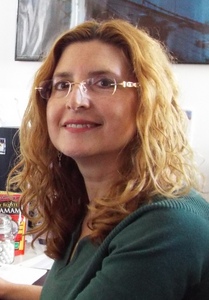
.jpg) "The applicant must provide sufficient information for the FCC to determine whether there exists any material and substantial question of fact regarding whether the applicant has the character qualifications to be a Commission licensee," the FCC said.
"The applicant must provide sufficient information for the FCC to determine whether there exists any material and substantial question of fact regarding whether the applicant has the character qualifications to be a Commission licensee," the FCC said.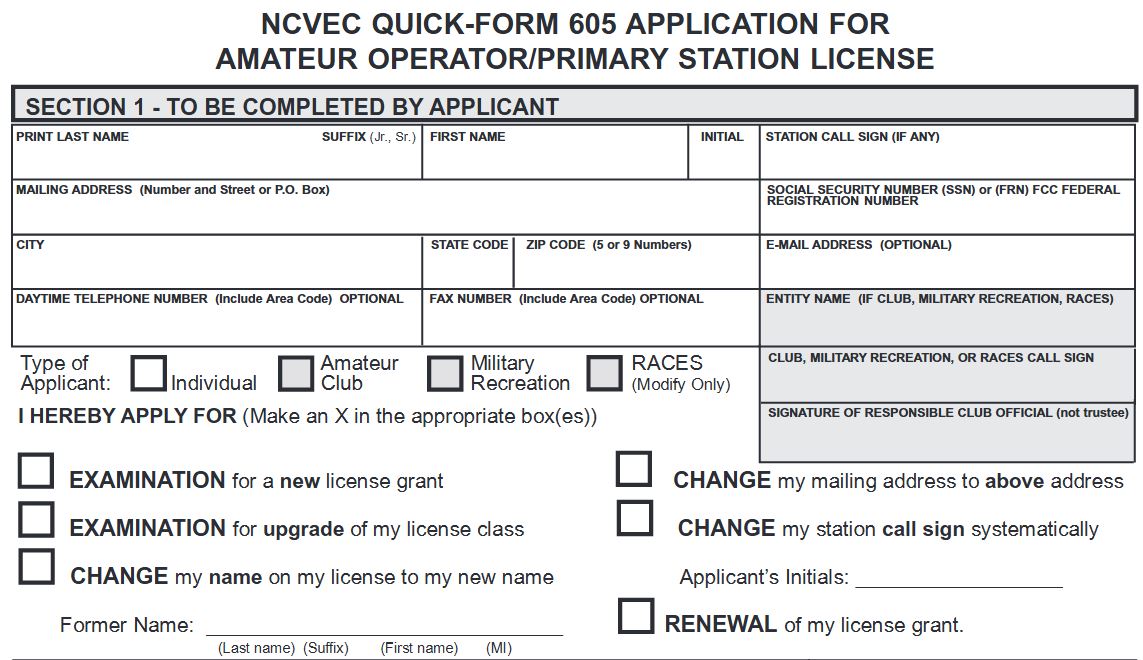 The FCC said the felony question must be answered every time -- even if previously answered -- for New, Modification, Renewal/Modification, and Amendment applications. "Assuming that nothing has changed, the attachment to the subsequent applications can simply reference the file number of the application where the complete explanation was given, rather than having to set forth the complete explanation each time," the FCC memo said. "Clubs are not exempt from the felony question. The question applies to the club as an entity and to the trustee, but not to any other individual officers." Read
The FCC said the felony question must be answered every time -- even if previously answered -- for New, Modification, Renewal/Modification, and Amendment applications. "Assuming that nothing has changed, the attachment to the subsequent applications can simply reference the file number of the application where the complete explanation was given, rather than having to set forth the complete explanation each time," the FCC memo said. "Clubs are not exempt from the felony question. The question applies to the club as an entity and to the trustee, but not to any other individual officers." Read .jpg) Sponsored by
Sponsored by .jpg)
 W9E plans to operate on 80, 40, and 20 meters (and perhaps other bands, if conditions permit), on CW, SSB, and digital modes (JT65, JT9, and PSK31). All amateur operators visiting the area for the eclipse are invited to visit. A copy of your license and photo ID are required to operate. Amateur Radio license testing also will be offered during the event.
W9E plans to operate on 80, 40, and 20 meters (and perhaps other bands, if conditions permit), on CW, SSB, and digital modes (JT65, JT9, and PSK31). All amateur operators visiting the area for the eclipse are invited to visit. A copy of your license and photo ID are required to operate. Amateur Radio license testing also will be offered during the event.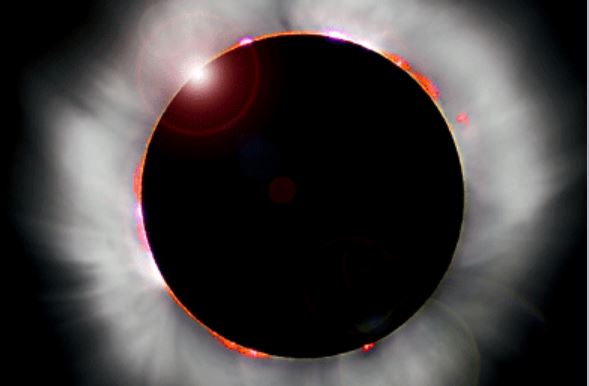 The Solar Eclipse QSO Party (
The Solar Eclipse QSO Party (.jpg)
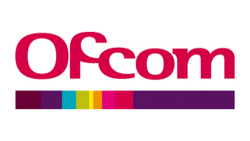 "The 2.3 and 3.4 GHz spectrum is needed to provide additional capacity to meet growing consumer demand for mobile broadband," Ofcom said in a statement. "It is important that the frequencies are made available as quickly as possible for the benefit of consumers and industry."
"The 2.3 and 3.4 GHz spectrum is needed to provide additional capacity to meet growing consumer demand for mobile broadband," Ofcom said in a statement. "It is important that the frequencies are made available as quickly as possible for the benefit of consumers and industry."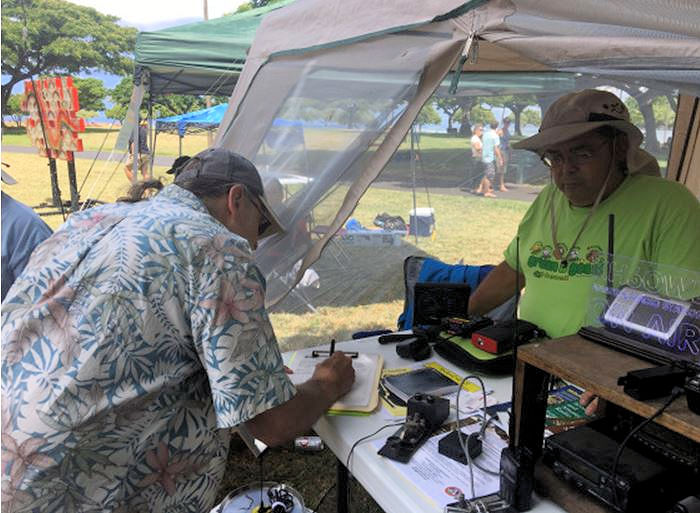

.jpg)
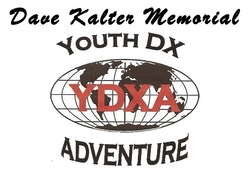 Dave Kalter, KB8OCP, Memorial Youth DX Adventure Set to Start on August 3: Dave Kalter Memorial Youth DX Adventure (
Dave Kalter, KB8OCP, Memorial Youth DX Adventure Set to Start on August 3: Dave Kalter Memorial Youth DX Adventure (.gif) IARU Region 1 President Expresses Concern Regarding Spectrum Challenges in Europe: International Amateur Radio Union Region 1 (
IARU Region 1 President Expresses Concern Regarding Spectrum Challenges in Europe: International Amateur Radio Union Region 1 (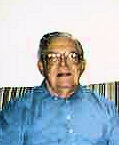 Former Arizona Section Manager Jim Swafford, W7FF, SK: Former ARRL Arizona Section Manager Jim Swafford, W7FF, of Tucson died on July 7. An ARRL Life Member, Swafford was 94. He served as Arizona SM from 1985 until 1991. Swafford was licensed in 1937 as W9ZAW in Kansas and served in the US Navy during World War II. He later worked in the aerospace and broadcasting industries. Survivors include his wife Maria, KB7INH.
Former Arizona Section Manager Jim Swafford, W7FF, SK: Former ARRL Arizona Section Manager Jim Swafford, W7FF, of Tucson died on July 7. An ARRL Life Member, Swafford was 94. He served as Arizona SM from 1985 until 1991. Swafford was licensed in 1937 as W9ZAW in Kansas and served in the US Navy during World War II. He later worked in the aerospace and broadcasting industries. Survivors include his wife Maria, KB7INH.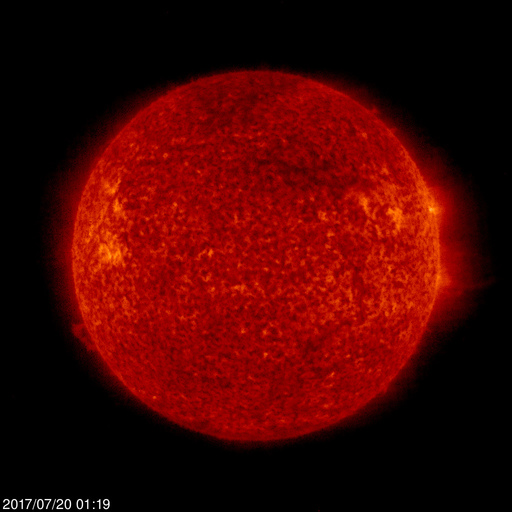 Predicted solar flux is 75 on July 20-24; 70 on July 25-26; 75 on July 27-28; 90 on July 29-August 11; 85 on August 12-13; 80 on August 14; 74 on August 15-19; 75 on August 20-24, and 90 on August 25-September 2.
Predicted solar flux is 75 on July 20-24; 70 on July 25-26; 75 on July 27-28; 90 on July 29-August 11; 85 on August 12-13; 80 on August 14; 74 on August 15-19; 75 on August 20-24, and 90 on August 25-September 2.







